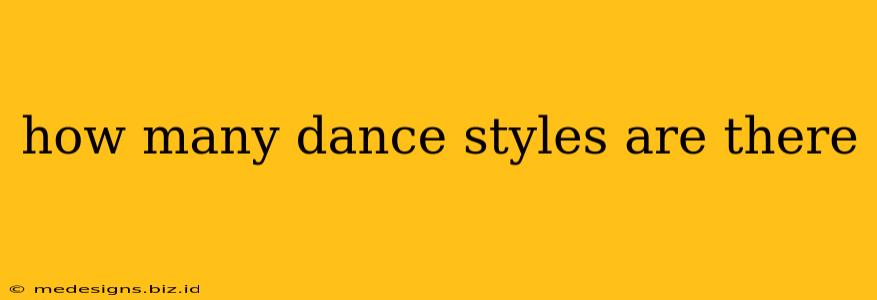How Many Dance Styles Are There? A Deep Dive into the World of Dance
The question "How many dance styles are there?" doesn't have a simple answer. It's a bit like asking how many types of food there are – the number is vast and constantly evolving! While there's no definitive count, we can explore the sheer breadth and diversity of dance forms across the globe. We can confidently say there are hundreds, if not thousands, of distinct dance styles, each with its own unique history, techniques, and cultural significance.
Categorizing the Uncountable: Broad Dance Style Families
To better understand the scope, let's look at some major categories:
-
Ballet: A highly technical and codified style with a rich history, Ballet forms the foundation for many other dance styles. Within Ballet itself, you'll find variations like Classical Ballet, Neoclassical Ballet, and contemporary ballet fusions.
-
Modern and Contemporary: These styles often break away from the strict rules of ballet, emphasizing emotion, improvisation, and personal expression. Modern dance pioneers like Isadora Duncan and Martha Graham significantly impacted the evolution of contemporary dance.
-
Jazz: A vibrant and energetic style with roots in African American communities, Jazz encompasses a wide range of subgenres, including Broadway Jazz, lyrical Jazz, and more.
-
Tap: Characterized by the rhythmic sounds created by tapping shoes, tap dance boasts a fascinating history and unique percussive quality.
-
Hip Hop: A diverse and ever-changing style born in the streets, Hip Hop includes breaking, popping, locking, and more. Its influence on popular culture is undeniable.
-
Ballroom: A collection of partner dances performed in competitions, Ballroom encompasses styles like Waltz, Tango, Foxtrot, and Quickstep. Each dance has its own distinct rhythm, steps, and emotional expression.
-
Folk Dance: This broad category includes traditional dances from various cultures around the world. Folk dances often reflect the history, traditions, and social customs of specific communities. Examples range from Irish step dancing to flamenco.
-
Latin Dance: This vibrant category includes styles like Salsa, Bachata, Samba, and Merengue, each with its own distinctive rhythm and feel.
Beyond the Major Styles: The Nuances and Fusions
The categories above only scratch the surface. Within each major style, countless variations and subgenres exist. Furthermore, the constant evolution of dance leads to new styles emerging through fusion and innovation. Contemporary dancers often blend elements from multiple styles, creating unique and expressive movement vocabularies.
Why Counting Dance Styles is Difficult
The challenge in counting dance styles lies in the fluid and evolving nature of dance itself. New styles constantly emerge, while existing styles evolve and adapt. The lines between styles often blur, making definitive categorization difficult. Regional variations within a single style also add to the complexity.
The Ever-Expanding World of Dance
Ultimately, instead of focusing on a precise number, it's more rewarding to appreciate the incredible diversity and richness of the dance world. Each style offers a unique window into culture, history, and human expression. Whether it's the elegance of ballet, the power of hip hop, or the storytelling of folk dance, the world of dance provides endless possibilities for creativity and exploration. So, explore, discover, and dance!
